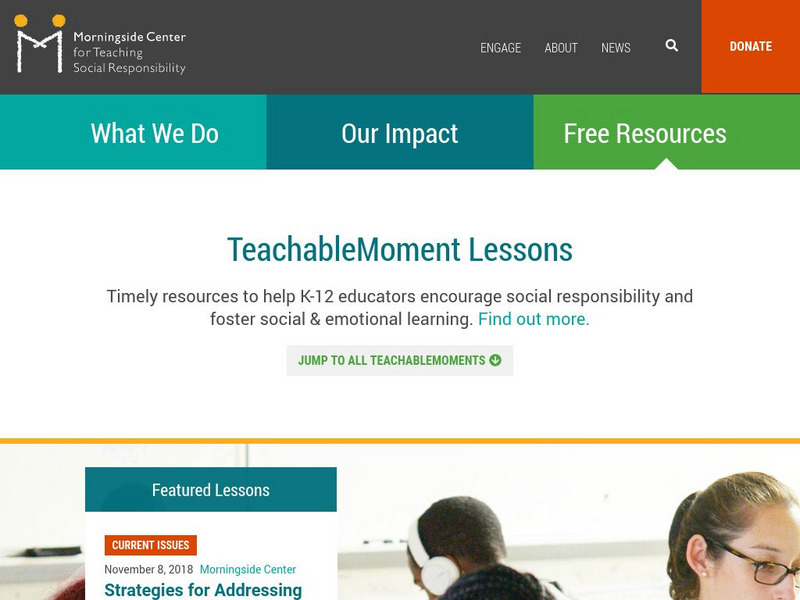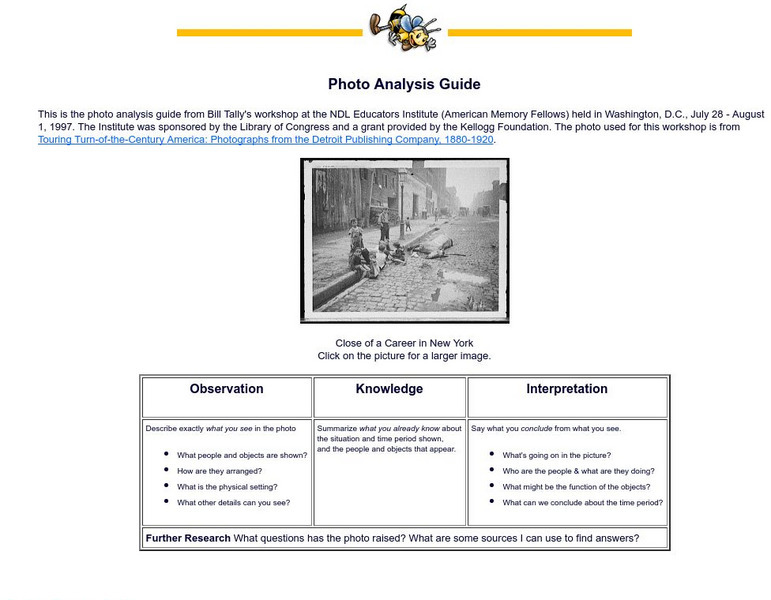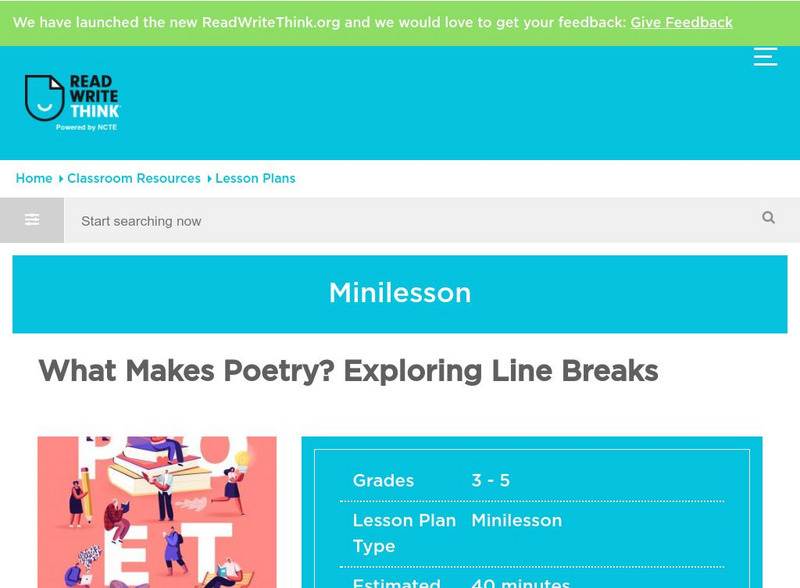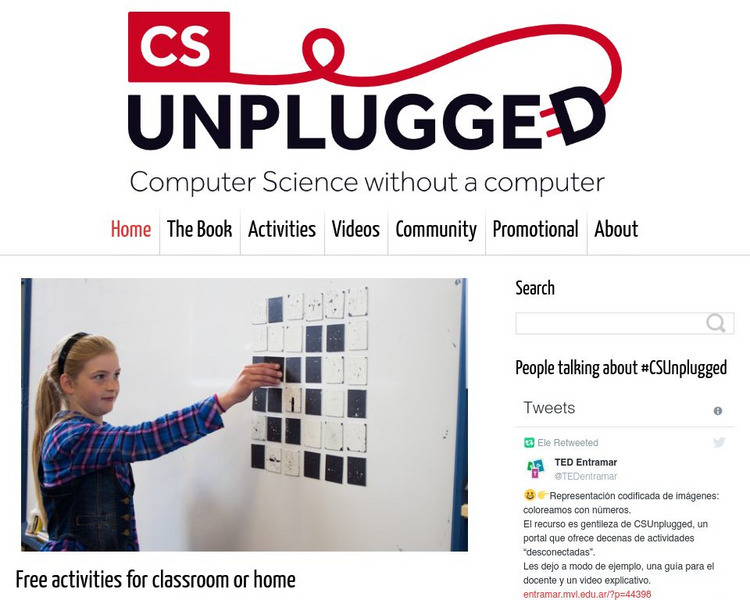Other
In Time: Tenets of Democracy: Critical Thinking and Decision Making
This critical thinking exercise and checklist is designed for teachers and students. A lesson plan can be developed here that illustrates decision-making skills and a teacher can use examples of common problems that get in the way when...
Science Education Resource Center at Carleton College
Serc: Rainfall and Elevation: A Charting and Critical Thinking Exercise
In this lab, learners will learn to organize and present data in a visual way so that they can then summarize in writing their conclusions about the relationships between the data.
Science Education Resource Center at Carleton College
Serc: Learning About Dimensional Analysis and Stoichiometry
Help your students learn the skill of dimensional analysis and the importance of mastering that skill. In this activity, students will work on their critical thinking by solving dimensional analysis problems. The lesson is formatted on...
Lumen Learning
Lumen: Analysis: Putting It Together: Analysis
This lesson focuses on analysis including an understanding of what analysis is, the keys to effective analysis, and the types of analytic assignments.
ReadWriteThink
Read Write Think: Improving Student Writing Through Critical Thinking
Contains plans for a lesson about writing draft letters, or reflective letters about pieces of writing that students are submitting to an instructor. In addition to objectives and standards, this instructional plan contains links to...
Library of Congress
Loc: Photo Analysis Presenting the Statue of Liberty
The ability to examine a primary source is a gateway to building critical thinking skills and constructing knowledge. This lesson provides the students an opportunity to observe similarities and differences between 2 visual images,...
Other
Csicop: Field Guide to Critical Thinking
This article, originally published in Skeptical Inquirer, outlines some of the key components of the scientific problem-solving process while addressing the many reasons for the popularity of paranormal beliefs in the U.S. (Published in...
Stanford University
Stanford University: Spatial History Project
Several individual projects are going on under the umbrella of the Spatial History Project. These projects are developed and worked on by students, staff, and scholars as they expand studies within the humanities through spatial,...
Center for Innovation in Engineering and Science Education, Stevens Institute of Technology
Ciese: Catch a Wave
In this project for Grades 6 to 12, students will use real data collected online to learn how waves and tides work. They will learn what causes water to move, and how waves and tides impact on humans, organisms and waterfront lands. They...
Lumen Learning
Lumen: Analysis: Suspend Judgment
This article focuses on the need to suspend judgment and keep an open mind while analyzing a situation or researching a topic.
Science Education Resource Center at Carleton College
Serc: Hand Towing a Car: Critical Thinking, Problem Solving and Analysis
In this active learning activity, students will find a technique to move a car with one hand. Students are given only a tow strap, so the students must apply angular force to successfully move the car with one hand.
Khan Academy
Khan Academy: Aggregate Demand in Keynesian Analysis
This article examines each component of aggregate demand from the Keynesian perspective. Includes a table summarizing the information in the article, review questions, and critical thinking questions.
Annenberg Foundation
Annenberg Learner: America's History in the Making: Museum Curator
As part of the larger unit, America's History in the Making, from Annenberg Learner, this interactive allows students to be curators of their own mini-museum by choosing artifacts that fit a topic of their choice under the general theme...
Other
Critical Thinking Secrets: What Is Systems Thinking?
There are various approaches to solving problems that require us to analyze and interpret data. However, complex problems can require different perspectives to work upon and different elements that altogether play a crucial role in...
Lumen Learning
Lumen: Analysis: What Is Analysis?
This lesson focuses on analysis including defining analysis and listing the essential skills of analysis.
ReadWriteThink
Read Write Think: Book Sorting: Using Observation and Comprehension
Critical thinking, comprehension and analysis skills are the focus of this physical activity. Good beginning to teaching different ways of looking at things.
Other
Morningside Center for Teaching Social Responsibility: Teachable Moment
Authors provide thoughtful lessons on current events of the day that encourage social responsibility and critical thinking. Lesson plans are divided into elementary, middle and high School. Past lessons on important events are archived.
Center for Innovation in Engineering and Science Education, Stevens Institute of Technology
Ciese: Air Pollution: What's the Solution?
Outdoor air pollution poses a major threat to human health and threatens the ozone layer. Students will examine real time weather data in this extensive unit to learn how air quality is measured, its health impact on at-risk populations,...
Cyberbee
Cyberbee: Photo Analysis Guide
This site is a guide to help students analyze visual media. Further research questions included.
Books in the Classroom
Carol Hurst's Children's Literature Site: Looking Critically at Picture Books
This site describes several ideas and activities to use with picture books and intermediate/middle school age young scholars. Specific title to use are also given.
Cyberbee
Cyberbee: Who Dunnit?
If you are a crime scene investigation (CSI) fan, then you will love this site! You get to be the detective by examining the evidence, viewing the crime scene, dusting for fingerprints, interviewing the suspects, and solving the crime.
ReadWriteThink
Read Write Think: It Doesn't Have to End That Way
Literary response and prediction are the focus of this lesson plan. Knowing story structure is an important skill for literary analysis, and this gives teachers a way to help learners develop this skill. Includes links to web resources,...
ReadWriteThink
Read Write Think: What Makes Poetry? Exploring Line Breaks
This lesson plan explains how analyzing poetry is a many-layered process. This lesson plan introduces the special characteristics of poetry and leads students through a look at how poems are structured and why. Includes links to poems...
University of Canterbury
University of Canterbury: Cs Unplugged
A collection of free learning activities that teach computer science through games and puzzles that use cards, string, crayons and lots of running around. The activities introduce students to computational thinking through concepts such...






















